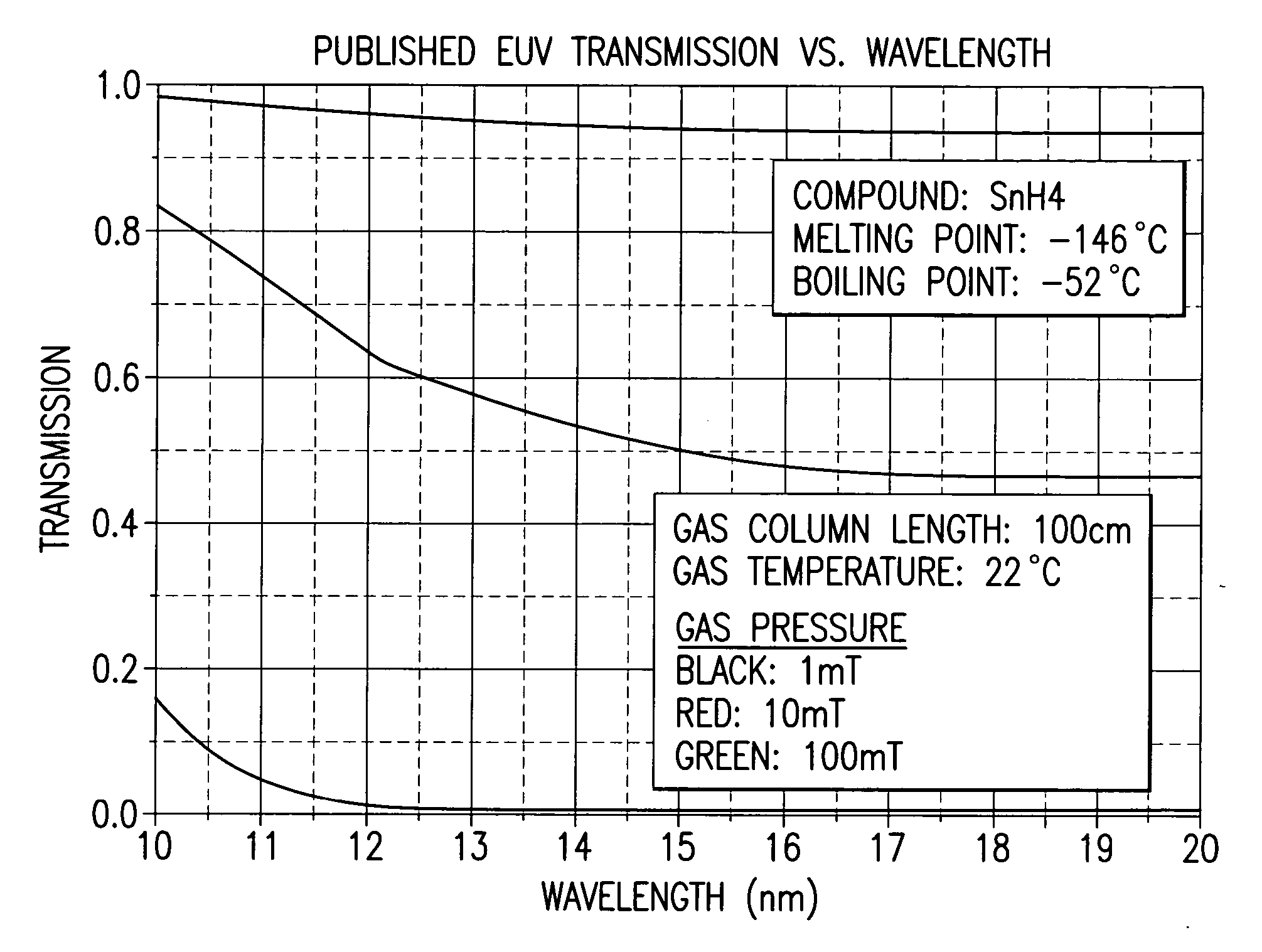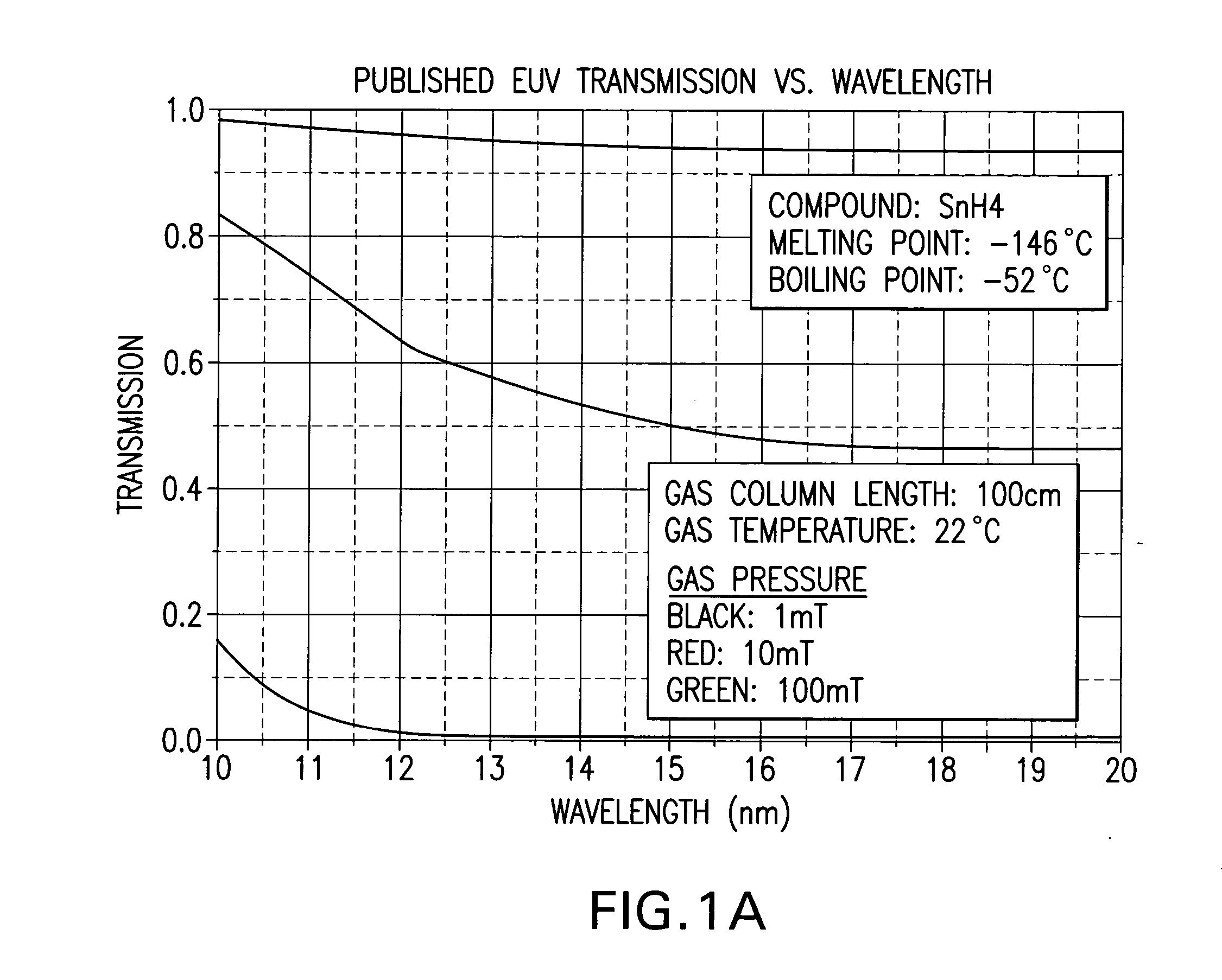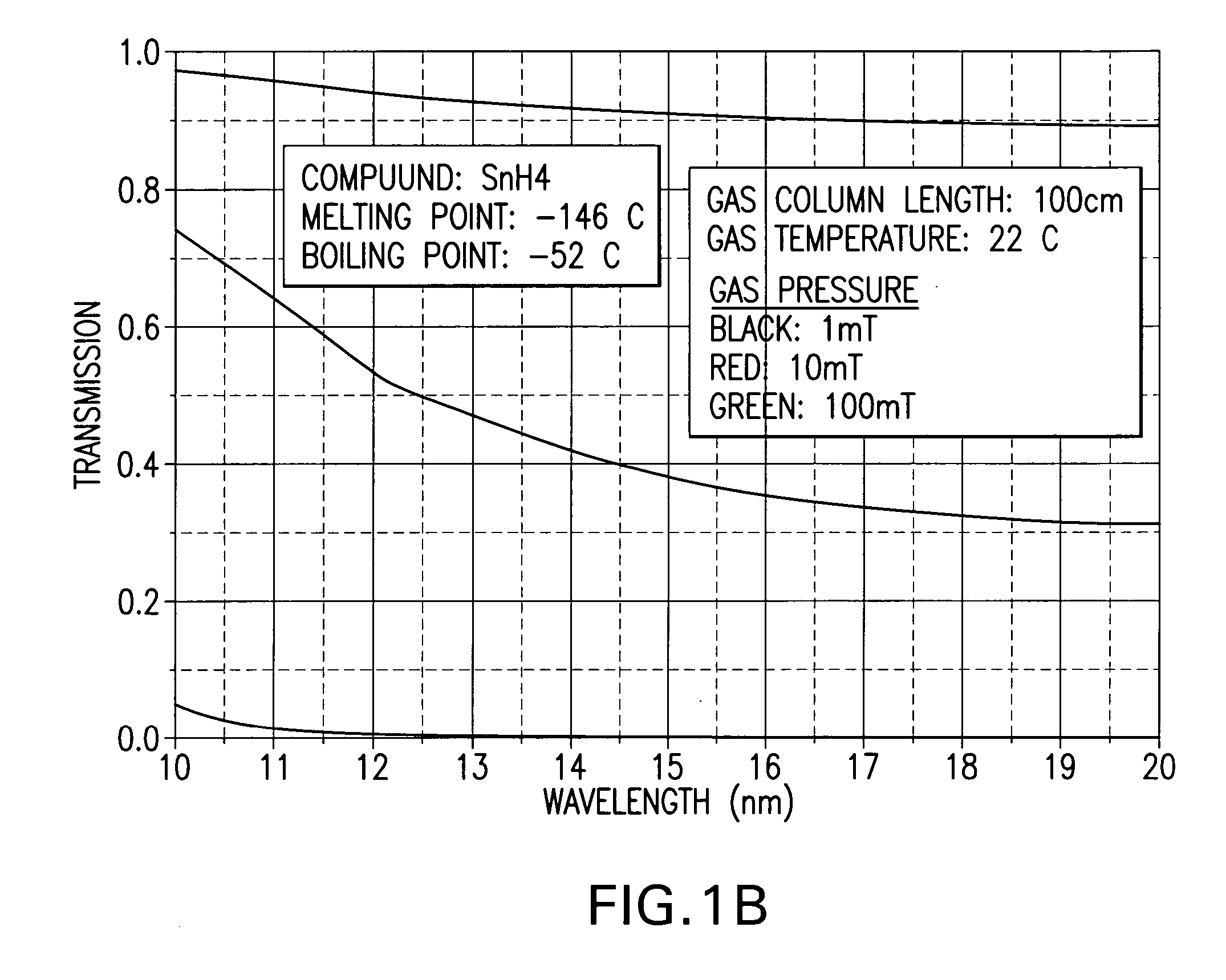EUV collector debris management
a technology of debris management and collector, applied in the direction of electrostatic cleaning, cleaning process and apparatus, chemical apparatus and processes, etc., can solve the problems of dpp or lpp perception of inability to remove tin from optical elements, and achieve the effect of reducing the optical performance of materials and reducing the reflectivity of reflective surfaces
- Summary
- Abstract
- Description
- Claims
- Application Information
AI Technical Summary
Benefits of technology
Problems solved by technology
Method used
Image
Examples
Embodiment Construction
[0013] At least one tin hydride investigated by applicants, e.g., SnH4 has a large vapor pressure at temperatures at or below 450-500° C. and an activation energy to form the compound from a tin halogen (hydrogen) reaction is high and thus requires a large amount of power applied to the mirror surface for formation. Applicants have considered other possible halogen forming compounds (halides and hydrides) made from EUV target materials currently under consideration, e.g., tin.
[0014] Some relevant values are shown below in Table I.
TABLE ICompoundMelting Point (° C.)Boiling Point (° C.)SnH4−146−52SnF2213850SnF4—705SnCl2247623SnCl4−33114SnBr2216620SnBr431202SnI2320714SnI4143364H2−259−252F2−219−188Cl2−101−34Br2−7359I2113184Xe−111−108
[0015] The above noted Phillips patent application contains plots of pressure vs. temperature for most of these compounds and shows that most have higher vapor pressure at any given temperature than lithium (lithium's boiling point is 1342° C.).
[0016] Ap...
PUM
| Property | Measurement | Unit |
|---|---|---|
| temperatures | aaaaa | aaaaa |
| boiling point | aaaaa | aaaaa |
| radii | aaaaa | aaaaa |
Abstract
Description
Claims
Application Information
 Login to View More
Login to View More - R&D
- Intellectual Property
- Life Sciences
- Materials
- Tech Scout
- Unparalleled Data Quality
- Higher Quality Content
- 60% Fewer Hallucinations
Browse by: Latest US Patents, China's latest patents, Technical Efficacy Thesaurus, Application Domain, Technology Topic, Popular Technical Reports.
© 2025 PatSnap. All rights reserved.Legal|Privacy policy|Modern Slavery Act Transparency Statement|Sitemap|About US| Contact US: help@patsnap.com



